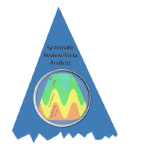 There’s a rather neat editorial in BMC Medicine that discusses how academics might better write their papers to inform and influence policy makers. I was taken with how much the tone of this, and the excellent mini-series of blogs on presentation skills by @ffolliett, were similar and applied to all sorts of layers of ‘policy’ making.
There’s a rather neat editorial in BMC Medicine that discusses how academics might better write their papers to inform and influence policy makers. I was taken with how much the tone of this, and the excellent mini-series of blogs on presentation skills by @ffolliett, were similar and applied to all sorts of layers of ‘policy’ making.
Take the ‘policy’ being made on your unit – guideline implementation, the ‘how we do stuff’ of everyday practice, the business case for a new ‘Where’s Wally?’ book pre-cannulation – and think how you might want to be given the evidence that underpins the actions.
You’ll ideally need:
- A timely approach to Power, which is mostly right
(80% right and on time is better than 99% right and 8 months too late) - A clear statement of the problem
- An explicit description of the limitations of your information
- An unbiased display of the evidence
- Showing solutions or highlighting a previously unrecognised problem
and - Described “as simply as possible (but no simpler)”
Now in order to get all that straight and understandable, it might be good to follow a format/skeleton that folk are generally familiar with. (If you start a story “Once upon a time …” there’s a wealth of expectation of what will follow. “Once upon a time …” then “the door creaked as the power in the lakeside cottage shorted out.” is unsettling.) It might well be than an Archimedes format allows you to tell these clinical, evidence informed tales, and maybe even encourages you to submit …
– Archi